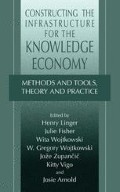Abstract
Business rules approach to information systems (IS) development emerged as the response to the growing need of business organizations to manage their knowledge explicitly and map it effectively to business IS in order to support daily business operations.
Access this chapter
Tax calculation will be finalised at checkout
Purchases are for personal use only
Preview
Unable to display preview. Download preview PDF.
References
ACT-NET Consortium: The Active Database Management Systems Manifesto: A Rulebase of ADBMS Features, ACM Sigmod Record, Vol. 25 (30), 40–49 (1996).
M. Bajec, R. Rupnik, and M. Crisper, Using Business Rules Technologies To Bridge The Gap Between Business And Business Applications, in: Proceedings of the IFIP 16th World Computer Congress 2000, Information Technology for Business Management ( G Rechnu, Ed), Beijing, China, 2000, pp. 77–85
Business Rules Group. Defining Business Rules — What Are They Really? (formerly known as the “GUIDE Business Rules Project Final Report,” November 1995), Business Rules Group, (3rd Ed.), July 2000. (Available at www.businessrulesgroup.org.)
M. Chein, M. L. Mugnier, Conceptual Graphs: Fundamental Notions. Revue d’Intelligence Artificielle, Vol. 6, No. 4, 365–406 (1992).
C. J. Date, What Not How: The Business Rules Approach to Application development,(Reading. Mass.: Addison-Wesley Longman).
E. Gottesdiener, Top Ten Ways Project Teams Misuse Use Cases — and How to Correct Them, Part I: Content and Style Issues, The Rational Edge, June 2002, URL: http://www.therationaledge.com/ contentljun_02/ t_misuseUseCases_eg.jsp.
E. Gottesdiener, Business RULES Show Power, Promise, Application Development Trends, Volume 4, Number 31, March 1997: see: http://www.ebeconsulting.com/publications.html#business_rules
I. Graham, Requirements Engineering and Rapid Development, (Addison-Wesley, 1998 ).
N. Lin, Alternatives For Rule-based Application Development, Business Rules Journal,Vol. 3, No. 10 (October 2002), URL: http://www.BRCommunity.com/a2002/n007.html.
T. Morgan, Business Rules and Information Systems: Aligning IT with Business Goals, (Addison-Wesley, 2002 ).
Object Management Group. Business Rules in Models: Request for Information. URL: http://cgi.omg.org/cgi–bin/doc?ad/2002–9–13 (2002)
J. Odell, Business Rules, Object Magazine, February, 1995 republished in: Wisdom of the Gurus: A Vision for Object Technology, Charles Bowman, ed., (SIGS Books, 1996) and in: Advanced Object-Oriented Analysis and Design using UML, (SIGS Books, 1998 ).
R. G. Ross, The Business Rules Classification Scheme, DataToKnowledge Newsletter,Volume 29, Number 5, (2001). See: http://www.brcommunity.com/a2001/b086.html
R. G. Ross, and G.S.W. Lam, RuleSpeakTMSentence Templates: Developing Rule Statements Using Sentence Patterns, Business Rule Solutions, (2001). Downloadable via: http://www.brsolutions.com/rulespeak_download.shtml
R. G. Ross, The Business Rule Book: Classifying, Defining and Modeling Rules, 2nd edition, (Database Research Group, Boston, MA, 1997).
J. Sobieski, S. Krovvidy, C. McClintock, and M. Thorpe, KARMA: Managing Business rules from Specification to Implementation, paper presented at American Association of Artificial Intelligence Conference, Innovative Applications of AI track, Portland, Or, 7/96. Business Rule Summit, February 2628, 1996, Miller Freeman Inc., 600 Harrison Street, San Francisco, CA 94107
J. F. Sowa, Knowledge Representation: Logical, Philosophical, and Computational Foundations, (Brooks/Cole, Pasific Grove et al., 2000).
L Valatkaite and O. Vasilecas, Deriving active database triggers from business rules model with conceptual graphs, Lithuanian Mathematical Journal, Vilnius, MII, t. 42, special issue “Proceedings of the XLIII conference of Lithuanian Mathematical Society”, 289–293, ( 2002, in Lithuanian).
I. Valatkaite and O. Vasilecas, Application Domain Knowledge Modeling Using Conceptual Graphs, in: Information Systems Development: Advances in Methodologies, Components and Management. Kirikova, M. ed. (Kluwer Academic/Plenum Publishers, 2002 ), pp. 193–202.
I. Valatkaite and O. Vasilecas, A Conceptual Graphs Approach for Business Rules Modeling. Accepted by Seventh East-European Conference on Advance in Databases and Information Systems (ADBIS), September 3–6, 2003, Dresden, Germany. To be published in Lecture Notes of Computer Science, Springer-Verlag, 2003.
B. Von Halle, Business Rules Applied: Building Better Systems Using the Business Rules Approach, (John Wiley and Sons, 2002).
B. Von Halle, The business rule roadmap, Database Programming and Design, 10(10), 13–15, (1997).
J. A. Zachman, A Framework for Information Systems Architecture, IBM Systems Journal, vol. 26, no. 3, IBM Publication G321–5298 (1987).
Author information
Authors and Affiliations
Editor information
Editors and Affiliations
Rights and permissions
Copyright information
© 2004 Springer Science+Business Media New York
About this paper
Cite this paper
Valatkaite, I., Vasilecas, O. (2004). On Business Rules Approach to the Information Systems Development. In: Linger, H., et al. Constructing the Infrastructure for the Knowledge Economy. Springer, Boston, MA. https://doi.org/10.1007/978-1-4757-4852-9_14
Download citation
DOI: https://doi.org/10.1007/978-1-4757-4852-9_14
Publisher Name: Springer, Boston, MA
Print ISBN: 978-1-4419-3459-8
Online ISBN: 978-1-4757-4852-9
eBook Packages: Springer Book Archive

